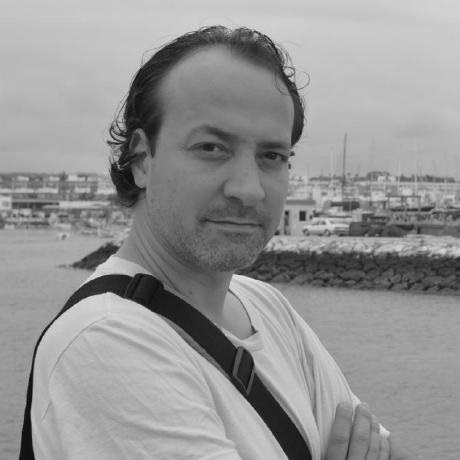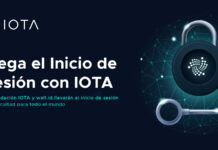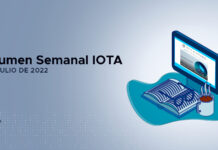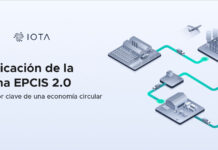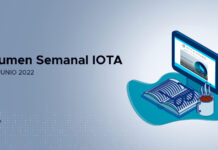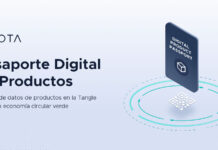
Nuriel is an active member of the IOTA community from the Netherlands, known for being the mind behind the IRI-Playbook: a great script to easily install and run fullnodes on the IOTA Ecosystem. We know this one is kind of technical, but those of you that are not tech savvy should use this opportunity to understand a little bit more about how IOTA Network works.
Geronimo Patat
Writer & Editor, IOTA Hispano
If you like what we are doing help us to continue working! Donate: http://www.iotahispano.com/donate/
Tell as a bit about your background!
I started working in the field of IT 10 years ago. Before that, I used to own and operate a bartending school and bar in Amsterdam. My first official job in IT was a Linux administrator for a hosting company. During this time I also started programming (Perl and Python) and took on Linux engineering roles. Through my work I quickly came to realize the power of combining developer skills with Linux engineering: infrastructure as code, automate everything. Since then I have been working with cloud technologies, high performance computing (HPC) clusters, hosting companies and private clouds. At my current job at Jexia I work as an infrastructure engineer and DevOps. Our stack includes OpenStack, Kubernetes, Load balancers, Ansible and Consul.
What’s the story behind your approach to DLT? When did you discovered them.
I wasn’t involved with any DLT until about a year ago. I have heard about Bitcoin many years before, but never took the time to familiarize myself with it. I knew it was a virtual currency but never associated it to the term ‘blockchain’, until last summer. To be honest, I wasn’t exposed to DLTs purely for the technology, but as a virtual currency I could invest in. Only later did I realize the technology and its potential.
When did you find out about IOTA and what were your first thoughts?
A friend of mine introduced me to IOTA last summer. Knowing my background in IT he thought I should have a look into the technology.
I was fascinated by the advantages IOTA has over other DLTs. Learning about the problems associated with blockchain (e.g. Bitcoin mining, inability to scale well, fees and slow transactions) I found IOTA’s concept very interesting. For me, IOTA is in a different league for its vision and how it can contribute to technological development (e.g. IoT, automotive industry and so on).
Netherlands is a very prolific IOTA development hub. Are you in touch with other community developers over there?
If anything, I am mostly in touch with IOTA community developers through Discord (or previously Slack), not really related to geography. I think that due to my background as a DevOps and infrastructure I am not involved with the development of software as most of IOTA community developers are.
Nevertheless, through my work with the IRI-playbook (full-node installer) I have been in touch with great developers such as Chris Holliday and Roman Semko on how to incorporate installation of their software via the playbook.
There are plenty of very talented developers involved with IOTA. I am sure that at some point in time we will be joining our efforts to create awesome solutions. Whether they will be from the Netherlands, I don’t know.
The new IRI release has improvements on the tip selection algorithm. What’s your opinion on the current network status and CFTS?
I am very confident in the IOTA development team and very happy to see their efforts bearing fruit. This is a development process, and we are going to see many more improvements. I think that for the sceptics, they should remember where we were at last year and realize where we are at now. Big applause to the devs!
We were all thinking “installing a Full Node should be as easy as possible” when you came on with the IRI Playbook. Would you take us through the process that led to it?
Last summer, most tutorials on how to install a full node were for Ubuntu or Debian. I decided to write a tutorial for CentOS (which is my favorite Linux distribution). I wanted to share with others how to install and operate a node in a secure manner.
What prompted me to develop the IRI-playbook was someone on Slack who mentioned he wanted to automate the full-node installation process via a software called Puppet. Puppet is used to automated installations and configurations. I am a big fan of Ansible which is another software to automate installations — that motivated me to write the “playbook”. (“Playbook” is the term used in Ansible for a set of instructions defining how to install and configure a system).
Having introduced the “one click install” method allowed many community members to operate their own node without having the basic Linux skills.

Picture: IRI Playbook running Graphana
Do you know how many people are running their Full Nodes using your solution?
Based on a survey I’ve published back in May (https://t.co/Hpt515msSM) out of 296 responses, %44.6 have installed their full node using the IRI playbook.
What is the current status of IRI Playbook? If you are developing new stuff, what’s on the roadmap?
I keep on maintaining the playbook. I guess I am very fast at applying fixes and improvements when reported or requested by the community. One example is the support for installing Let’s Encrypt SSL certificates to allow the IRI node to work with the new Trinity wallet.
I have further plans with the playbook: for example, to have all its services work inside of Docker containers. Alas, free time is not in abundance as I have a full time job and family.
I expect that further development of software surrounding IRI nodes (by the IOTA team or community developers) will prompt me to adapt the playbook to support those new features.
Explain us what a Load Balancer is and why it could be needed for companies adopting IOTA based solutions.
Imagine a website with lots of users visiting it every moment. The website is served by nothing less than a….server. If a single server has to process all the requests, it would most likely crash or be unable to respond on time.
To solve this, we deploy multiple instances of this server and use a load balancer to spread the requests among those. The requests first arrive at the load balancer where they are forwarded to the server instances. Having more instances to handle the requests reduces the load from a single server.
Alternatively, imagine lots of sensors having to connect to an IRI node to process their data, or cars’ wallets connecting to a node to process their transactions. A single node would have troubles serving this amount of devices. Deploying a load balancer to help spread the requests to multiple IRI nodes is a what is necessary to make this infrastructure work.
In addition, it would be wise for a company to have multiple load balancers (hence, you load balance to the load balancers too). If you only have a single load balancer and it fails, your entire infrastructure becomes inaccessible.
Another advantage of “plugging in” your webservers (or IRI nodes in our case) behind the load balancers is being able to take any of those nodes down for maintenance without disrupting operations.
Semko’s Carriota Field is load balancing more than 1000 Nodes. What do you think about that from a Cloud Infrastructure Engineering perspective?
Field is a great initiative and a service that helps many users connect to an endpoint that guarantees uptime. I don’t know anything about the technical details of how the Field server is deployed. If it is just a single server it has the risk of becoming a single-point-of-failure. Having multiple Field servers offers better protection against this scenario. For users, even if Field became unavailable, there are plenty of other clusters and nodes to connect to as an alternative, so I guess this isn’t such big a problem for the entire network.
I know that much effort is taken to make Field secure.
Nevertheless, I think that running your own node is probably the most secure, to avoid potentially connecting to an “evil” node.
How do you think the Network will behave on a futuristic scenario with millions of IoT devices around the globe transacting over the tangle?
As I’ve already said, I am very confident in the team and believe the network will live up to its expectations. Personally, with regards to the future, I am more focused on how to help deploy IRI nodes and realize a scalable and highly available infrastructure, how to automate, secure, manage, monitor and update those infrastructures. I think these are very exciting times and I am looking forward to the development and adoption of IOTA in real world use cases.
If you like what we are doing help us to continue working! Donate: http://www.iotahispano.com/donate/


